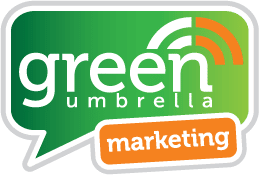Social Media and Marketing: 15 Statistics to Drive Your Marketing Strategy for 2020

Social Media and Marketing: 15 Statistics to Drive Your Marketing Strategy for 2020

As we creep towards the end of the year, hopefully, you are tuning into your marketing strategy for 2020. Where are you going to show up, what’s your focus, what are your measurable goals, and how will you measure your ROI?
The latter point is often a bone of contention in marketing circles; return on investment is notoriously difficult to measure when it comes to marketing. Keep in mind that people rarely commit to buying your product or service because of one singular piece of marketing activity. It takes multiple touchpoints before any money changes hands. It’s often preferable to focus on marketing key performance indicators (KPIs) rather than a straight ROI.
As a result of those multiple touchpoints, you need a marketing strategy that keeps you visible in the right places over the coming year. So, what have we learnt about marketing over the last 12 months that we should be keeping in mind for our 2020 strategy?
Stats Straight from Google
Listening to a presentation from Google recently, it was reinforced that we, as humans and consumers, are more impatient, demanding and curious than ever.
- There has been a huge increase in people adding the words ‘now’ or ‘today’ in their search terms. The phrase ‘near me’ is also sharply increasing. In some cases, it’s 2 – 3 times the amount of traffic seen compared to the previous 12-month period.
- Our consumption of video is still growing. You will no doubt have heard marketers like us talk about video as part of your marketing strategy. Google reinforced this. YouTube is the second-largest social platform (after Facebook), and 94% of people spend more than 30 mins or more a day on YouTube. We are also far more likely to share and engage with video-based adverts for products and jobs compared with text-based ads.
How can you use this? Make sure you’re tagging posts, YouTube videos and pages on your website correctly with keywords and location. If you’re not using video already, start exploring how you can do this in 2020.
Social Media Statistics
- Facebook is still far and away the biggest social media platform both in the UK and globally. It has 2.41 billion active users. It is the world’s third most visited website after Google and YouTube. (source Hootsuite)
- Of course, there are some dormant Facebook accounts, but stats show that 74% of Facebook users log in daily, and they spend an average of 38 minutes per day on the platform.
- In the UK, 70% of UK adults have at least one social media account, and 1 in every 5 minutes is spent on social sites. (source Ofcom: Online Nation)
- Use of Facebook-owned platforms WhatsApp and Instagram has grown over the last 12 months with 1.3 billion and 800m users, respectively.
- Over 200 million people visit a least one Instagram business page per day. However, demographics of Instagram users in the UK are heavily in the under 34 age-bracket, with 66% of users falling in this range. (source Statista)
- The top 3 reasons people engage with businesses and brands on social media is to ask a question, discuss an issue or to praise the product or service (via Sprout Social)
How can you use this? Social media is a crucial part of your marketing strategy. Think about your buyer persona, where are these people likely to spend their time online? Don’t feel pressured into using all channels if they are not relevant for you. Instead, learn a handful of platforms inside out to get the best return on your efforts. Measure your engagement, popular posts and traffic driven to your website then revisit your strategy accordingly.

Email Marketing
- The best time to send a marketing email is between 9, and 10 am, at 1 pm, or between 5 and 6 pm. Naturally, this correlates to when people are more likely to have time to check their emails.
- The best days are mid-week although emails sent on a Mon or Tuesday have lower unsubscribe rates (both via Hubspot)
- Spelling errors are still considered the most unacceptable email offence; they are also like to be picked up by spam filters so check and check again (source Radicati)
How can you use this? Marketing emails are still the best way to engage or re-engage your prospective clients. It’s a low-cost way of staying front of mind but make sure you are offering value, sending emails at the best time for your business and make sure you proof-read them thoroughly!
In all honesty, each section in this blog could be a lengthy article on its own with stacks of shiny stats to support them. However, it’s good to get into the right mindset of thinking strategically about your marketing for 2020.

Amanda is a freelance marketing consultant and business coach, having worked in marketing and leadership roles for 20+ years, and is an associate of Green Umbrella. Amanda is working with the GU team on strategy, marketing and business development and, in her words, ‘loves the ethos of Green Umbrella. The team really know their stuff when it comes to digital marketing and social media, plus they are genuinely great people to work with!’
Share this!

